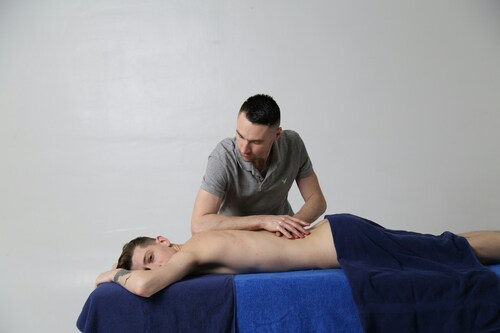Back strain affects countless individuals, often interfering with daily routines and overall quality of life. Whether caused by long hours at a desk, poor posture, or an underlying musculoskeletal issue, the discomfort can be frustrating and persistent. Fortunately, there are effective ways to ease the tension and get back to moving freely.
1. Sacroiliac Joint Pain Treatment
The sacroiliac (SI) joint connects the spine to the pelvis, and inflammation can cause pain in the lower back, hips, or legs. Modern SI joint pain treatment focuses on non-invasive, targeted care to relieve tension and improve mobility. A comprehensive program typically starts with a precise assessment using advanced diagnostic tools to identify the root of the discomfort.
Once diagnosed, the treatment often includes a blend of therapeutic injections, image-guided procedures, and customized physical therapy. These options work together to reduce inflammation, restore function, and support long-term recovery without the need for surgery. For individuals seeking a science-backed and patient-centric approach, this method offers a reliable pathway toward lasting relief.
2. Maintain Proper Posture
Maintaining correct posture plays a crucial role in preventing and managing back strain. Slouching or leaning forward for extended periods places excessive stress on the spine and surrounding muscles. Aligning the ears, shoulders, and hips in a straight line helps distribute weight evenly and reduces pressure on the lower back.
Using an ergonomic chair or adding lumbar support can enhance sitting posture, especially for those who spend hours at a desk. For standing tasks, keeping the shoulders relaxed and shifting weight between the feet regularly can also alleviate tension. Consistent posture awareness throughout the day helps prevent muscle fatigue and long-term strain.
3. Stretch and Strengthen the Core
A strong core acts as the body’s natural brace, providing support to the spine and reducing strain on the lower back. Incorporating daily stretches and strengthening exercises helps improve flexibility, balance, and muscular endurance.
Movements like pelvic tilts, bridges, and modified planks can be especially effective. Gentle yoga poses or Pilates routines can also offer low-impact ways to build core stability while promoting relaxation. Always start with light activity and slowly increase intensity to avoid further strain.
4. Apply Heat and Cold Therapy
Temperature therapy remains a tried-and-true method for relieving back discomfort. Cold packs reduce inflammation and numb sharp pain, particularly within the first 48 hours of strain. Conversely, heat therapy encourages blood flow, soothes stiffness, and aids the healing process in chronic cases.
Alternating between heat and cold can maximize effectiveness. It’s best to apply either treatment for 15 to 20 minutes at a time, allowing the tissues to rest in between sessions. Repeating this cycle a few times daily can significantly ease discomfort and promote healing.
5. Improve Sleep Habits
Poor sleeping positions or unsupportive mattresses can silently aggravate back strain. Sleeping on the back with a pillow under the knees or on the side with a pillow between the knees can maintain spinal alignment and reduce pressure. Avoiding stomach sleeping also helps, as it often forces the neck and spine into unnatural angles.
A firm yet comfortable mattress and supportive pillow can make a noticeable difference. Establishing a consistent sleep routine and ensuring adequate rest contribute to faster recovery and reduced tension overall. Quality sleep allows the body to repair strained muscles and maintain spinal alignment.
Back strain doesn’t have to be a permanent part of life. Significant relief can be achieved by embracing proactive habits like strengthening the core, correcting posture, improving sleep quality, and, if required, getting SI joint pain treatment. Combining advanced diagnostics with targeted therapies, it addresses the problem at its source and paves the way for long-term wellness.


